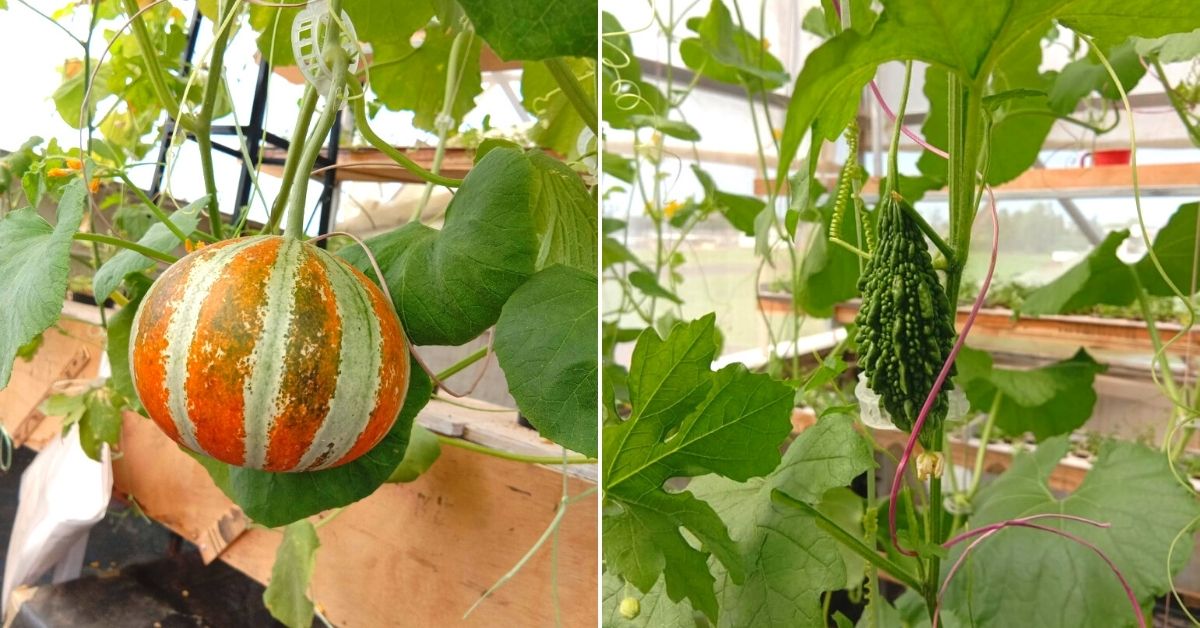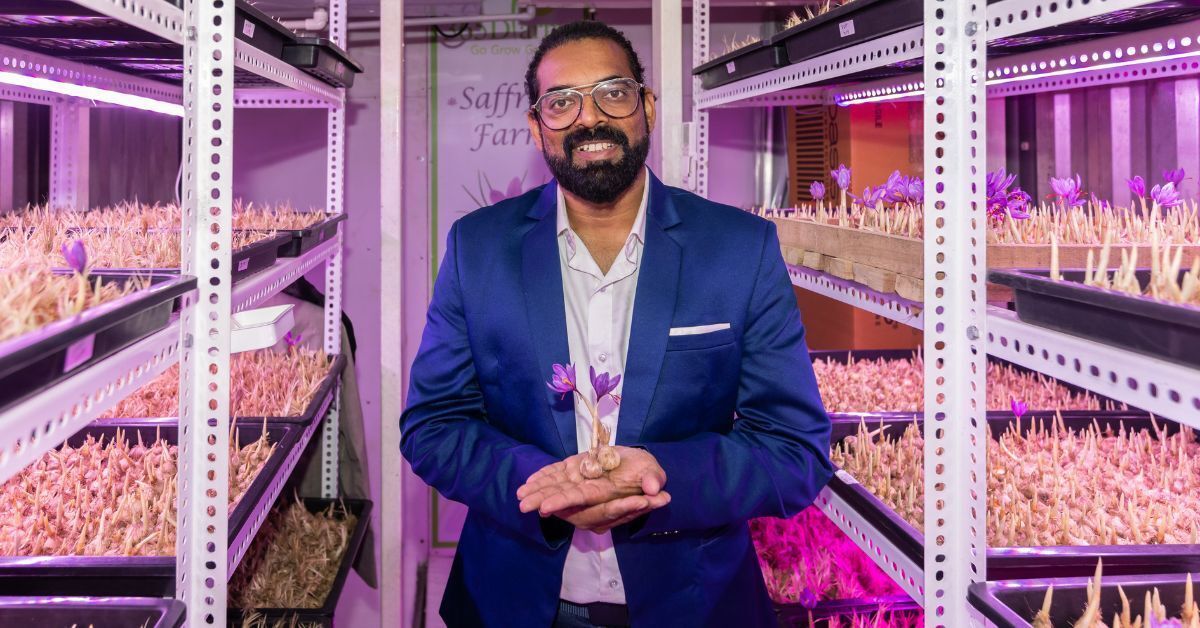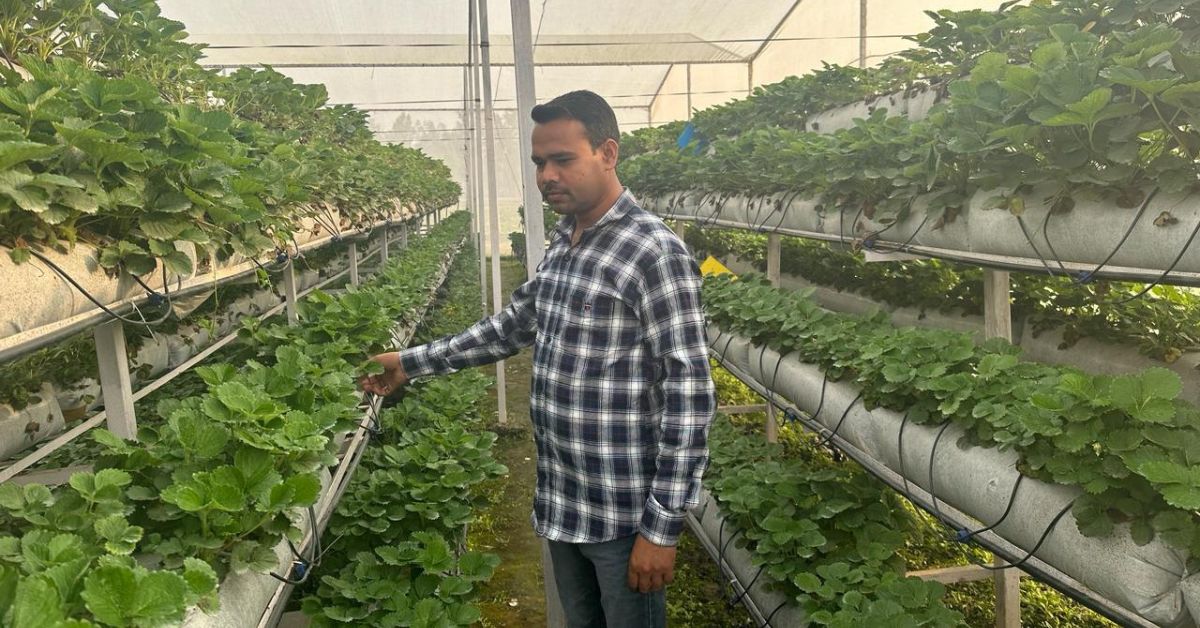In a conversation with an engineer-turned-farmer and co-founder, Abhay Singh of Eeki Foods, what fascinated me the most was the evolution of farming.
With no background in the field whatsoever, I only had a layman’s knowledge of how my food was grown. After a patient and long explanation about how medium-less farming works, my question was, “So the roots just hang in the air?”
He smiled and said yes.
This method of farming — hydroponics is not only effective in saving water but has also been helping farmers across the country earn in lakhs. If you are a farmer or someone who wants to try the method but is unsure where to start, we have you covered.
The Better India spoke to different farmers and curated a list that is sure to leave you inspired.
1. Abhay Singh’s soil-less farming
IIT-Bombay graduates Amit Kumar and Abhay Singh founded Eeki Foods, which uses medium-less farming to grow crops. The idea of the startup comes from Abhay’s passion for finding a healthier and more sustainable way of growing food.
Singh states, “We want to make farming sustainable and affordable for everyone.”
The startup uses hydroponics to grow vegetables on a large scale without soil. Their technique helps in saving 80% of water and growing the vegetables 75% faster. This method involves climate-proof chambers where plant roots hang in the air and receive nutrients through irrigation.

“We grow food in an empty chamber in a controlled environment. Roots hang in the air, irrigation happens, and we have our produce. We don’t use any soil or alternatives like coco peat to grow our vegetables and fruits,” shares Amit.
Eeki Foods operates in Haryana and Rajasthan, aiming for sustainable and affordable farming.
2. Shailesh Modak’s experiment with his jobs
While Shailesh Modak was growing up, his family always taught him to have stable jobs with steady earnings. However, he always felt that becoming an entrepreneur was his calling.
“So when I decided to quit my 13-year-long career to become an entrepreneur, it felt like a life-altering decision,” Shailesh.
While he tried his hand at doing different things, it was farming that he found his true calling in. Shailesh was able to grow a plant like saffron in Pune using hydroponics.
Investing Rs 10 lakh in research and setup, he created a method that uses 95% less water and allows year-round cultivation. His first crop yielded 875g of saffron, earning him Rs 5 lakh at Rs 500 per gram.

Shailesh aims to make saffron farming accessible to others, emphasising that anyone can adopt this controlled environment technique. He states, “My goal is to simplify the process so anyone can do it.”
3. Ramesh Gera’s journey to profits
Ramesh Gera’s foray into saffron cultivation began in 2017, driven by a desire to reduce India’s reliance on imported saffron, which constitutes 70% of the market due to limited domestic production.
After a successful engineering career, he was inspired by advanced farming techniques which he learned during a work stint in South Korea. Ramesh invested Rs 6 lakh to set up a 100-sq ft greenhouse in Noida’s Sector 63.
This investment covered construction costs as well as the cost of procuring saffron seeds from Kashmir.
Despite an initial expenditure, Ramesh found saffron farming lucrative. He reveals, “Saffron has a good rate in the market. You can earn up to Rs 2.5 lakh per kg in wholesale markets and Rs 3.5 lakh per kg in retail markets. You can also earn up to Rs 6 lakh per kg if you tap into the export business.”
The venture proved profitable, prompting Ramesh to establish the ‘Akarshak Saffron Institute’ in Noida, where he has trained over 370 individuals in indoor saffron cultivation. Now the venture yields him an impressive monthly income of Rs 3.5 lakh.
4. Dheeraj’s chance introduction to hydroponics
Dheeraj Verma’s journey into hydroponic farming began with a chance encounter.
A television programme highlighted Israel’s innovative farming methods. Frustrated by the limitations of traditional farming on his 10-acre farm in Barabanki, where he struggled to sell his produce even locally, Dheeraj was inspired to adopt hydroponics.
After extensive self-education through online resources and formal training in Madhya Pradesh, he invested Rs 12 lakh to set up a 3,500 sq ft hydroponics system for cultivating strawberries.

Within just two months of implementation, Dheeraj harvested an impressive five tonnes of strawberries, earning Rs 3 lakh in sales. Comparing this to traditional farming, he noted a fivefold increase in production efficiency.
5. Sandeep’s desire to connect with nature
Sandeep Kannan’s journey into hydroponic farming started from a desire to connect with his farming roots and explore innovative agricultural techniques.
Graduating amidst peers aiming for urban careers or government jobs, Sandeep opted to delve into hydroponics after researching various farming methods during the COVID-19 lockdown.
He started with small-scale experiments on his terrace, growing leafy vegetables and lettuce using PVC pipes and nutrient-rich water, Sandeep quickly saw success. He decided to expand and reached out to local markets. Sandeep gradually gained acceptance by supplying his products to supermarkets and residential areas in Tirupati.
Despite initial challenges securing capital and convincing family members of the venture’s viability, Sandeep now earns Rs 54,000 monthly.
Be it Sandeep’s desire to reconnect with nature or Abhay’s desire to bring innovation in farming, the method not only helped them increase their income but also use water effectively. With India’s pride being the agricultural sector, adopting such methods can show that modern farming can be both environmentally friendly and economically viable.
Edited by Padmashree Pande
No comments:
Post a Comment